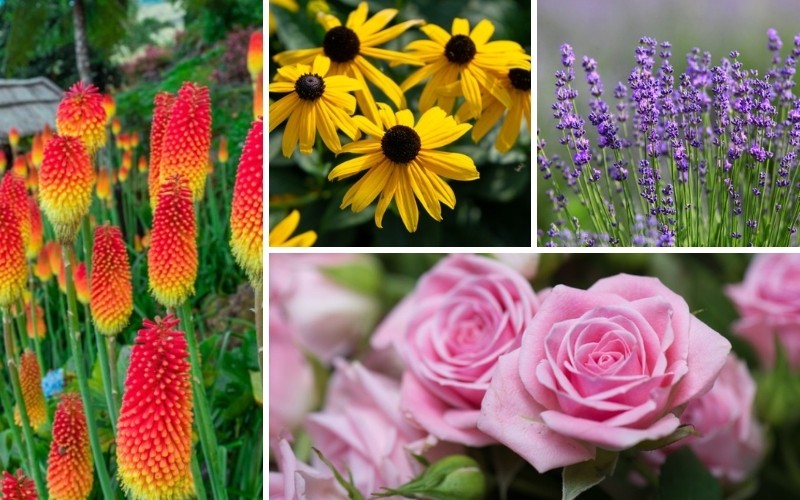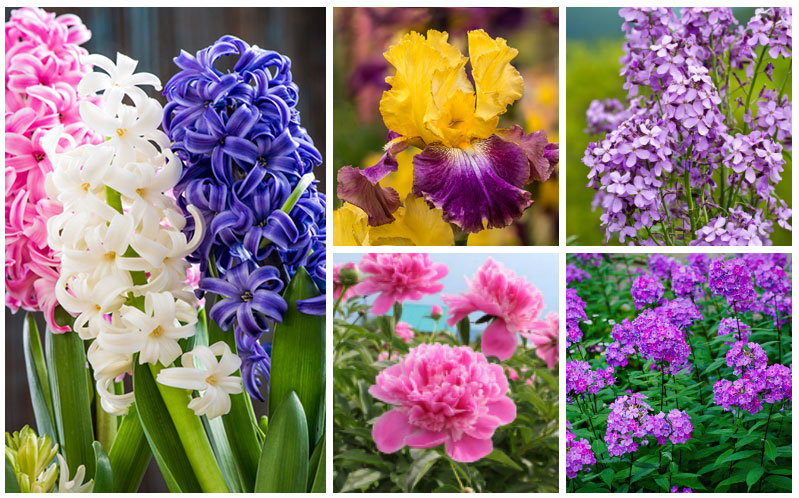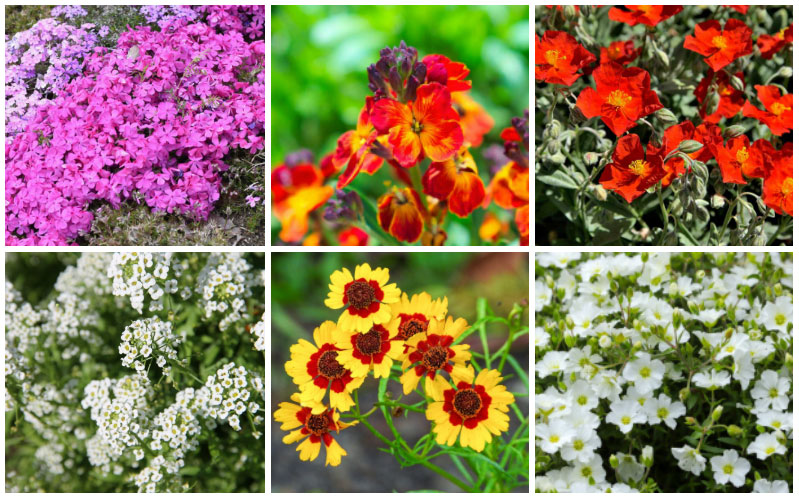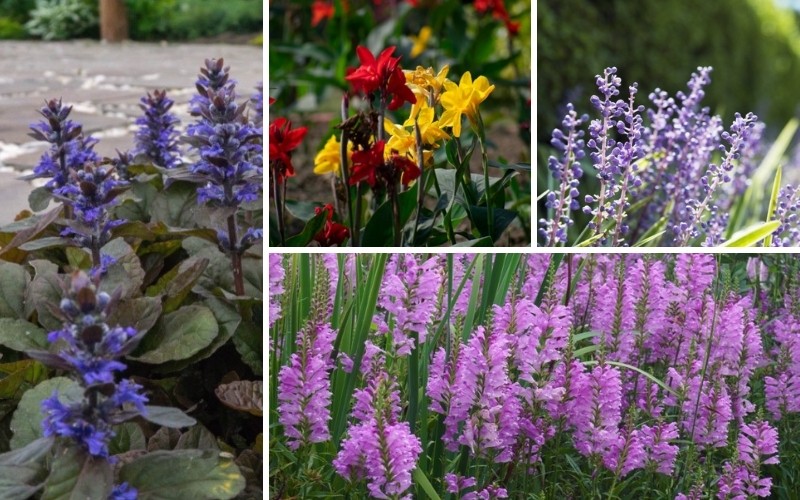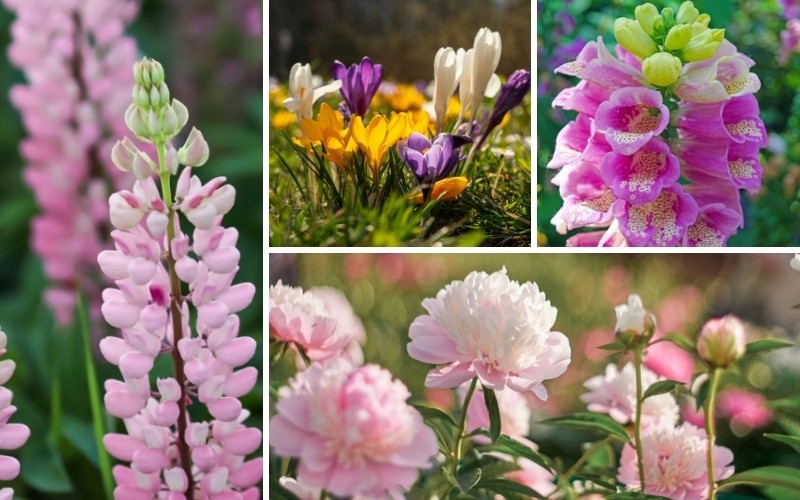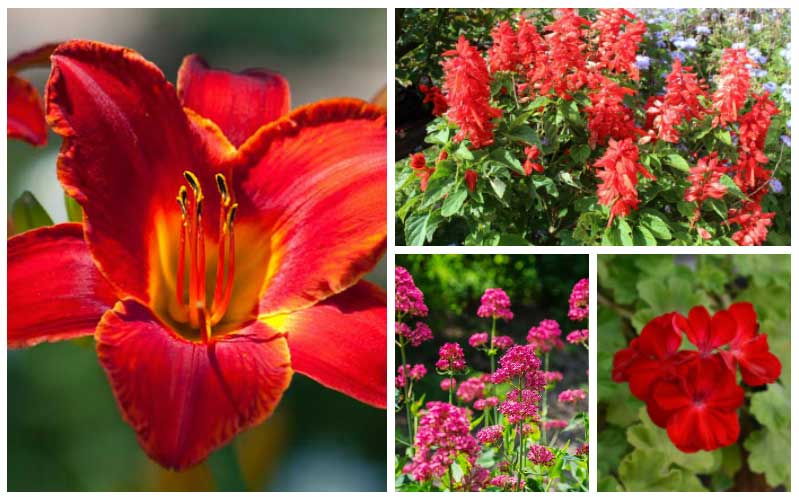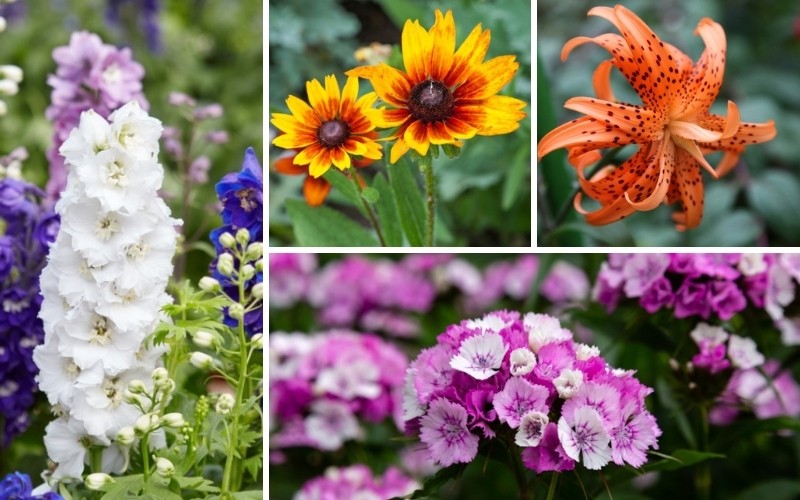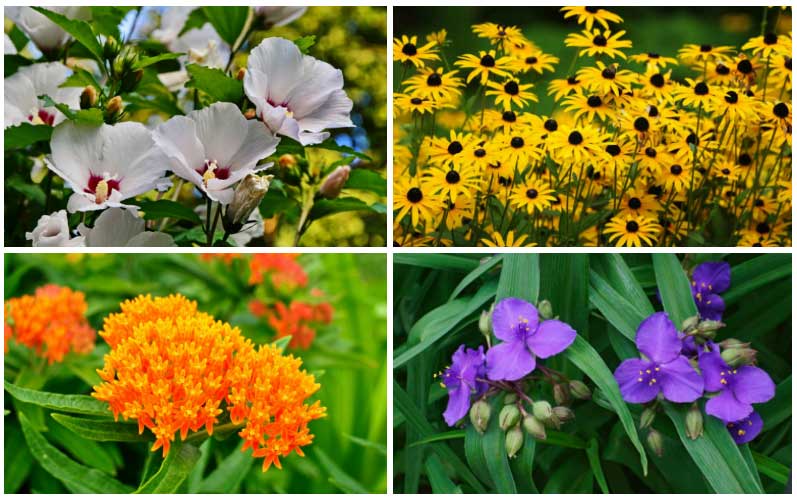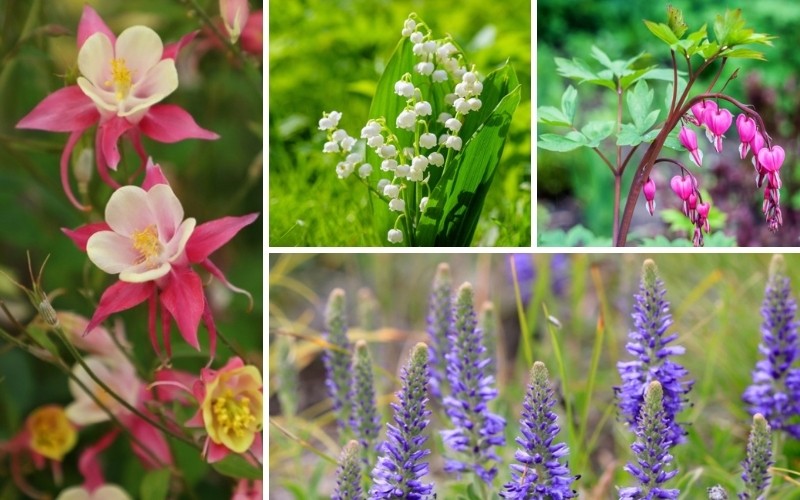
When you’re adding more flowers to your garden space, you’re going to want to add some colorful blooms to your layout that will come up year after year.
I have created a new garden space, and I have decided to make it full of orange flowering perennials. It took me a little bit of time to determine which perennials to plant and which ones would look great together.
This gallery is designed to help you find orange blooms with ease; there are 18 different varieties that you can choose from.
Trollius (Globeflower)
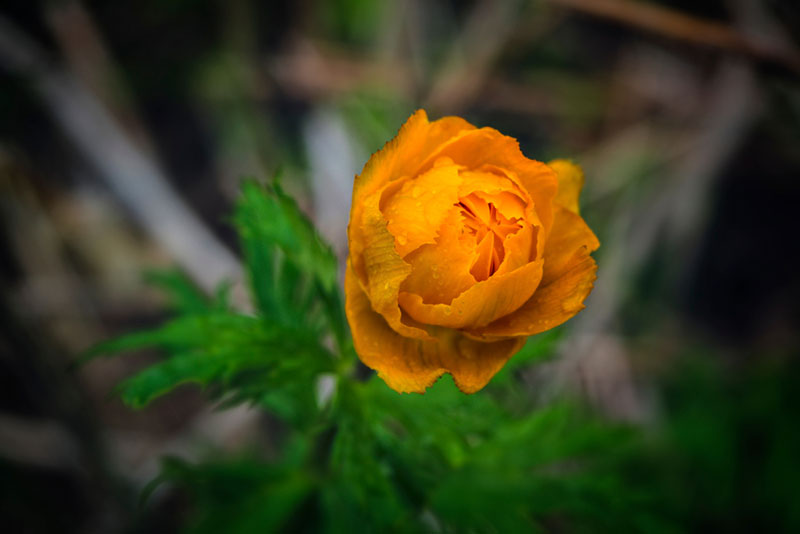
This is a plant that grows best in zones three through six; they prefer partial to full sun and moist soil. Though, too much sun can cause the leaves to fade. With proper care, the flower can grow to be two feet tall. The light orange to yellow blooms can be seen from May to July.
Peruvian Lilies (Alstromeria)

This is a perennial that can have multiple colored blooms, so make sure that yours is orange. It grows well in zones seven to 10 and prefers to grow in slightly acidic soil. It grows in full sun, but in hotter areas, a bit of shade is preferred.
Blanket Flower

The blanket flower is a lovely plant that produces red, yellow, and orange blooms for most of summer and fall. It grows in zones three through 10 in well-draining soil and full sun. These plants will require frequent watering to start, but they do grow best in a hot, dry climate.
Kniphofia (Torch Lily)

This is a unique looking plant that grows in zones five through nine. They can grow to be about five feet tall, and they will attract butterflies and hummingbirds to your garden. They will grow best in full sun, and it is a hardy plant, so it will grow in any soil.
Milkweed
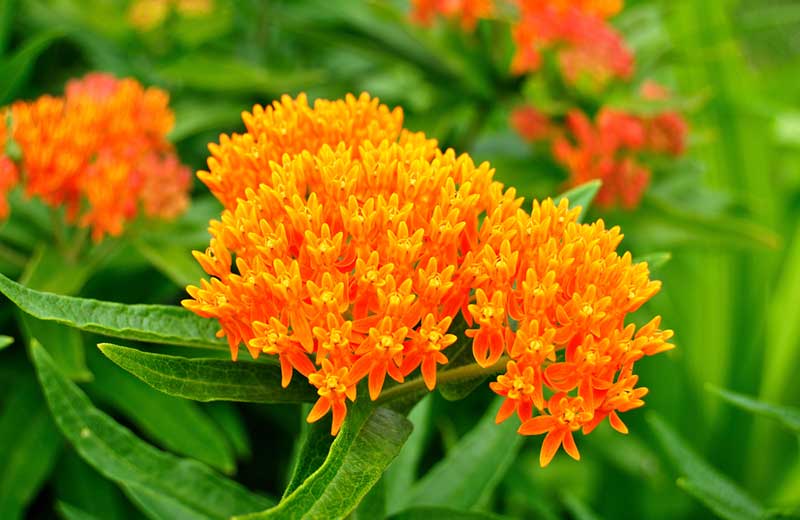
This is a sweet smelling flower that’s great for attracting butterflies to your outdoor space during the summer. When mature, it can grow to be up to four feet tall. It should be grown in full sun and well-drained soil. It can be found in hardiness zones three through nine.
Helianthemum (Sun Rose)
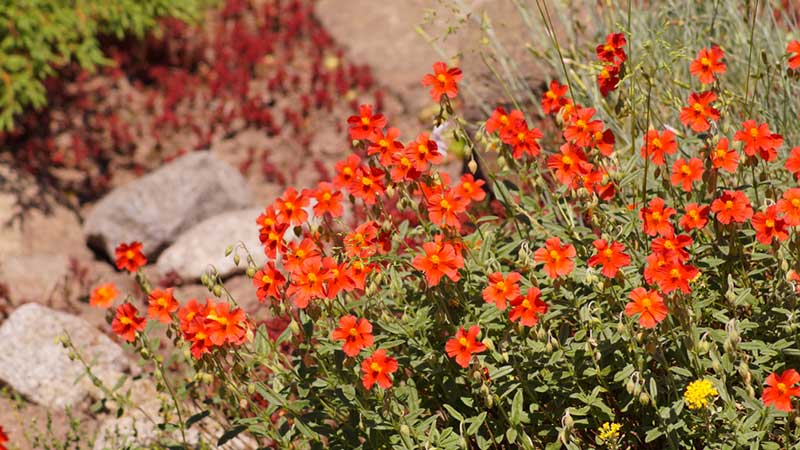
This is a plant with bright orange blooms that will make an excellent ground cover. They grow in zones five through eight, and they need to grow in well-drained soil and full sun. They can tolerate some shade in hotter areas, and they will do well in sandy, rocky soil.
Potentilla (Cinquefoil)

If you are looking for butterflies in your garden, then this is a beautiful plant that has yellow, orange blooms from June to September. It can be found in zones three through seven, and full sun to partial shade is ideal. It can grow to be four feet high and five feet wide.
Poppy
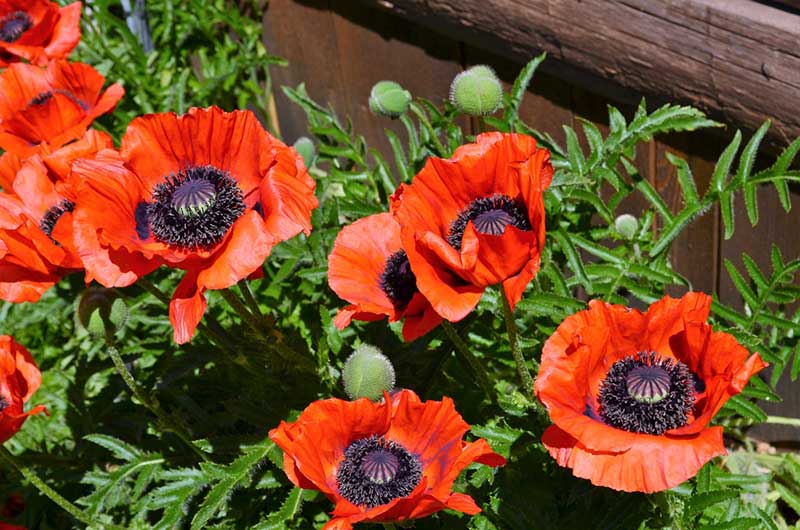
Seen growing in zones two through eight, this is a plant that can be seen in nearly any zone, depending on the variety that you have selected to grow. Most grow in zones three to nine. They tend to thrive in well-draining soil and full sun, but they do not like high heat.
Mimulus (Monkey Flower)
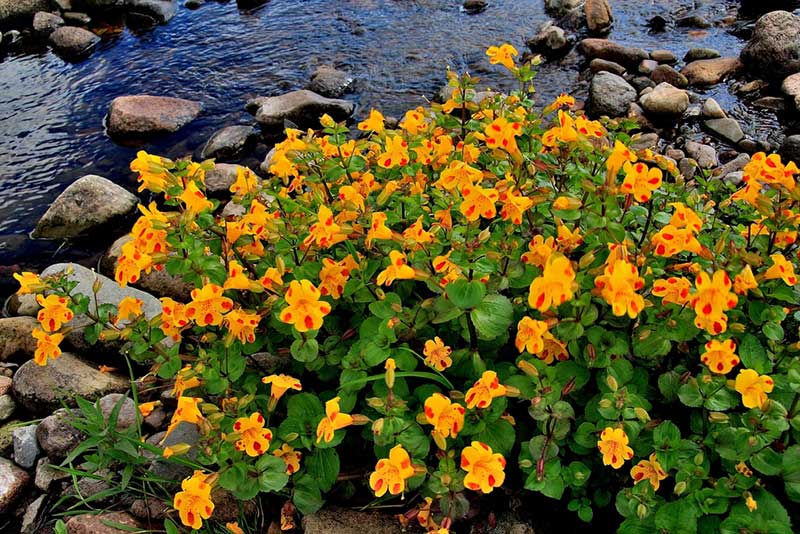
This plant produces yellow to orange flowers that grow in hardiness zones seven to nine. It prefers full sun and well-draining soil to grow. It only grows up to a foot in height, so it makes a great border plant to place around your garden.
Geum
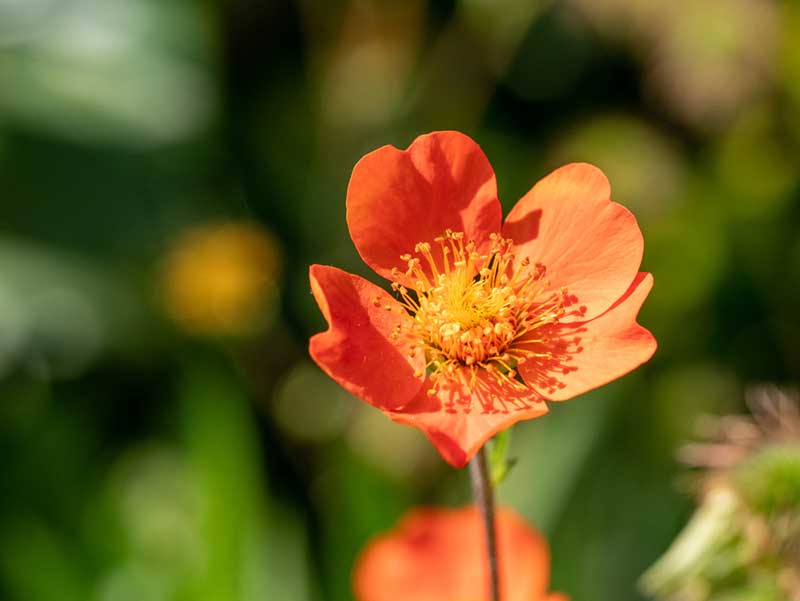
The perfect choice for a rock garden, this is a brightly colored plant with orange blooms that will grow to be up to 18 inches. It can be seen in zones five through nine, and it prefers full sun and well-drained soil. They attract butterflies to your garden as well.
Wallflower
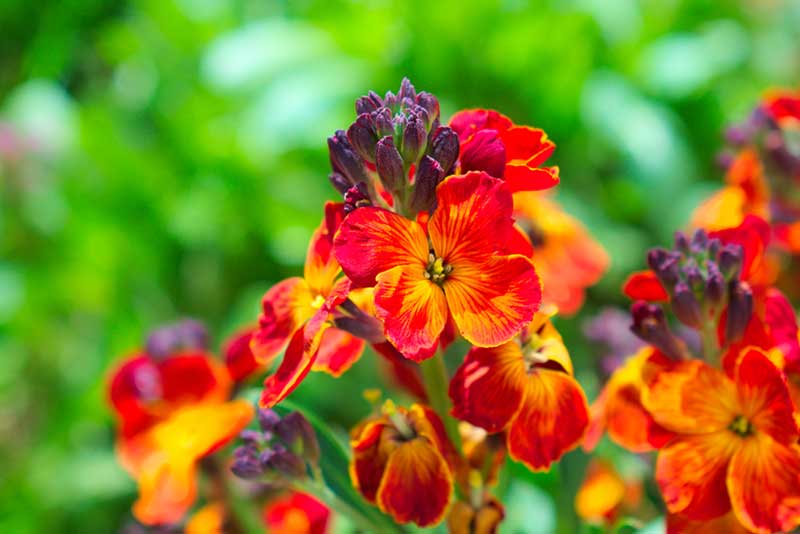
If you like pansies, then this is a plant with orange flowers that has a very similar shape. It grows best in zones three through 10, and it can grow to be three feet tall with a width of about two feet. It grows well in full or part sun and well-drained soil.
Ligularia (Golden-Ray)
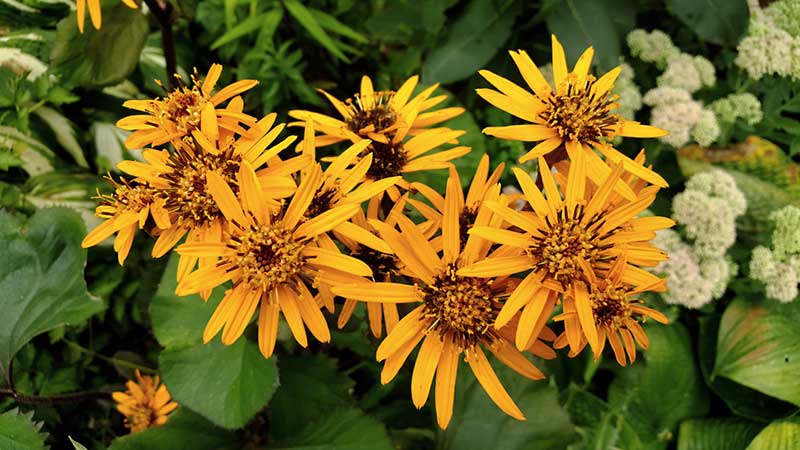
This plant, which originates from China, has daisy-like flowers that are orange in color. The plant does best in rich, moist soil, and it prefers to grow in partially shady conditions. They typically do not do well in the afternoon sun. They grow in zones six through eight.
Iris
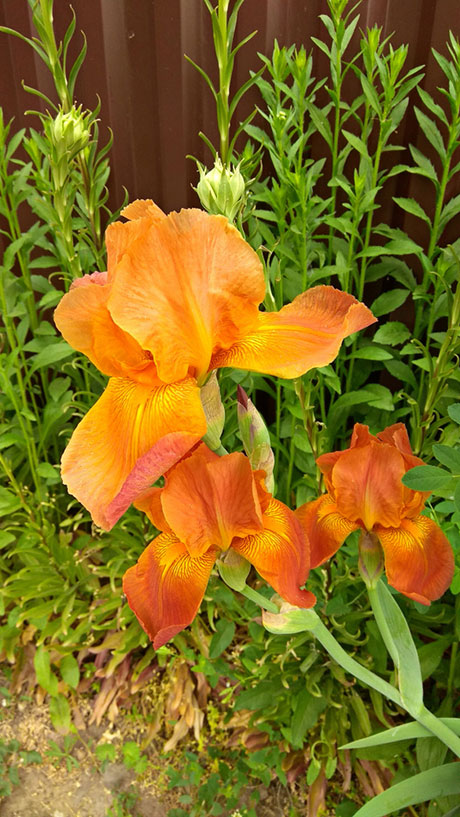
This is a plant that can be seen in zones three through 10, but they tend to do best in the drier parts of the country. An iris needs to have at least six hours of full sunlight a day, and they prefer well-drained soil, so they grow well in slightly acidic clay soil.
Lewisia
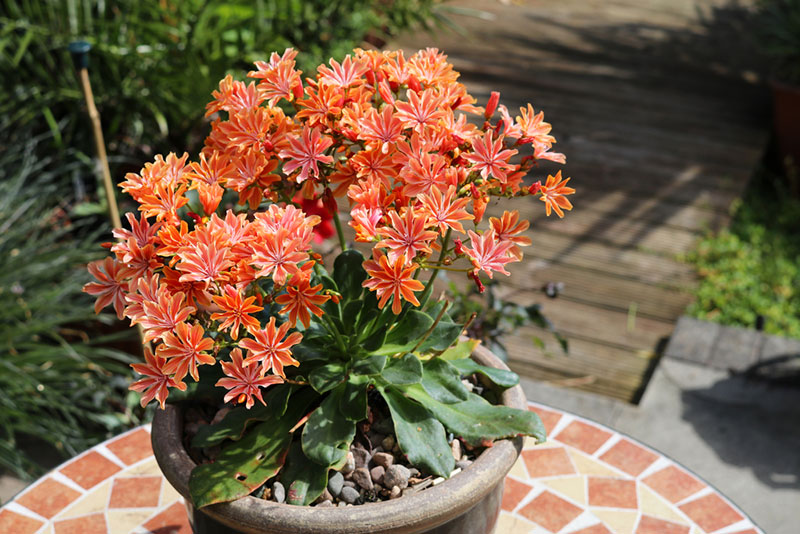
Also known as bitterroot, this is a great option that can be used as a groundcover in your garden. Flowers bloom from spring until early summer, and they can be orange, red, pink, or purple. They grow best with full sun and moist soil, but they can also do well with partial shade.
Daylily
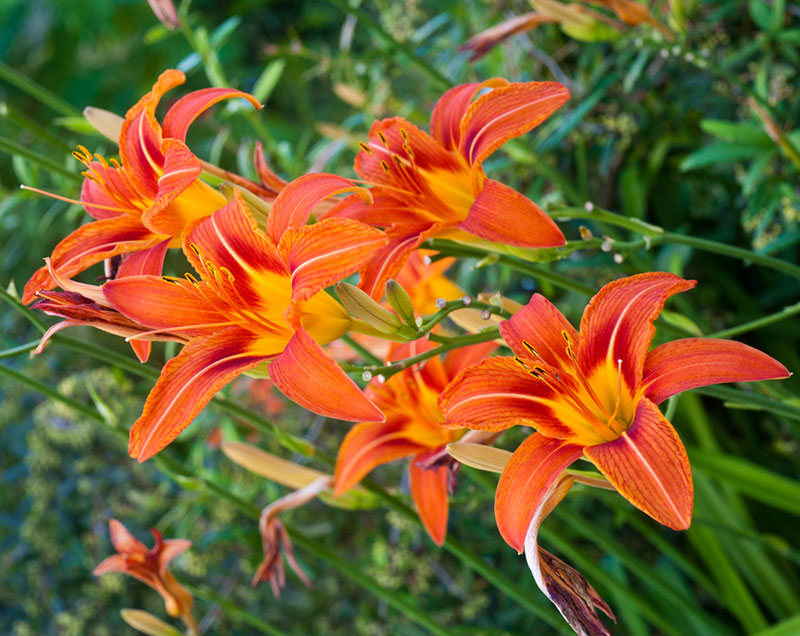
This is a beautiful plant that typically grows in clumps. The flowers are generally orange and yellow in color, and they can be seen most in zones three through nine. They prefer full sun to grow their best, but they will do fine with some shade as well.
Sneezeweed
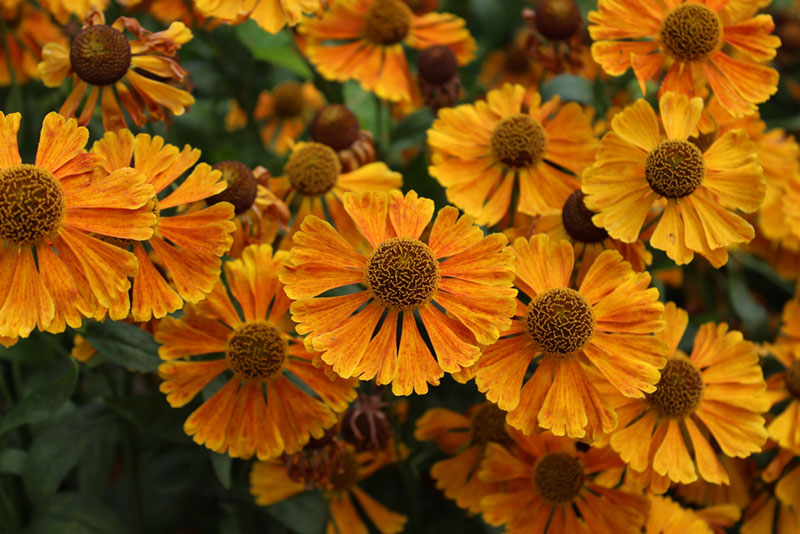
Seen growing the best in zones three through nine, sneezeweed is a plant that produces a flower that looks a lot like a smaller orange sunflower. It can grow to be up to 60 inches tall, and it will do best with full sun and slightly acidic soil.
Chrysanthemum
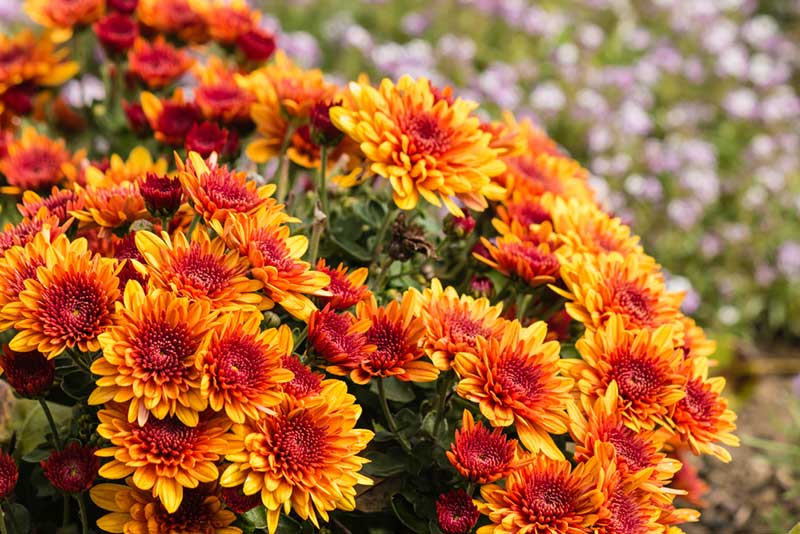
Also simply called mums, these plants will grow best in full sun and well-draining, rich soil. In zones five through nine, the plant can grow to be three feet tall and two feet wide. These plants will need to be watered a bit more than other perennials because they have shallow roots.
Blackberry Lily
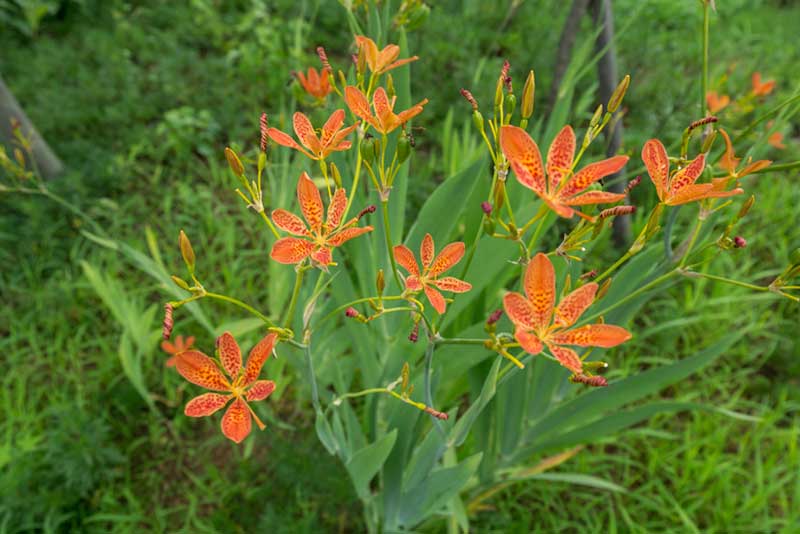 A blackberry lily is a unique plant that creates orange and yellow flowers that can grow to be up to three feet tall. They seem to grow best in zones five through 10, and they will do best in partial to full sun and well-drained soil.
A blackberry lily is a unique plant that creates orange and yellow flowers that can grow to be up to three feet tall. They seem to grow best in zones five through 10, and they will do best in partial to full sun and well-drained soil.
Orange Coneflower (Rudbeckia fulgida)
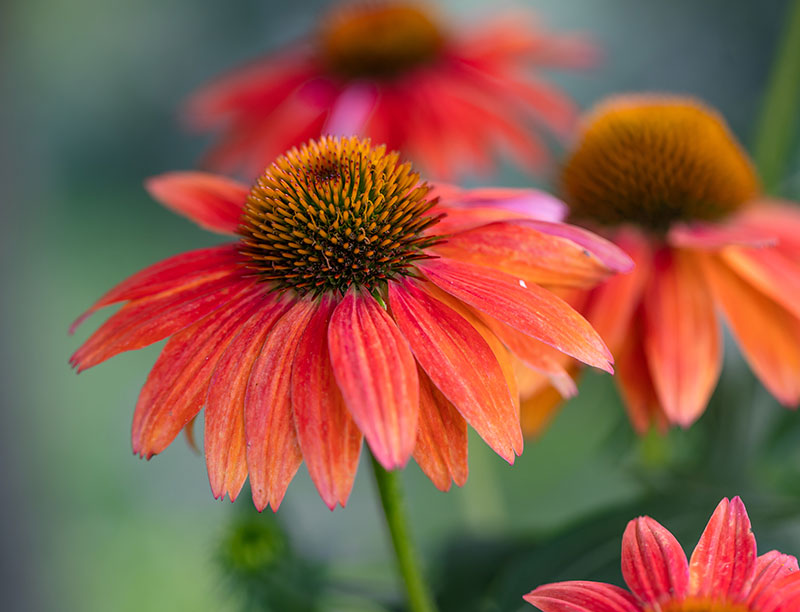
Also commonly known among gardeners by the names, Orange Coneflower, Orange Rudbeckia, and Perennial Black-eyed Susan, Rudbeckia fulgida is a brilliant bloomer and ranks high among popular flowers for perennial flower beds and gardens.
The orange coneflower makes quite a statement with yellow-orange petals arranged in a compound star arrangement around the apex of the flower head. The 1-3 ft. stems, as well as the oval leaves scattered along said stems, are covered with bristly hairs but are not sticky and do not cause any irritation or damage when touched.
Flower heads are typically -3 inches wide though some can be larger or smaller, and they can be single blooms on a single stem of arranges in clumps and other branching patterns depending on the subspecies and variety.
These orange perennials are a friendly native to the US, hardy in zones 4-8, sun and drought hardy, easy to care for once established, and a great attractor of bees, butterflies, and hummingbirds!





